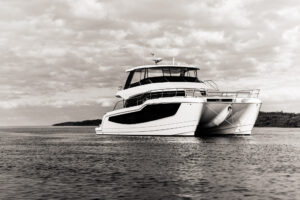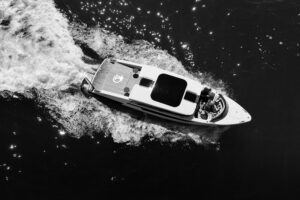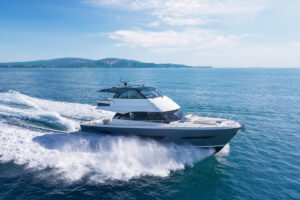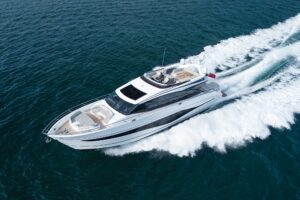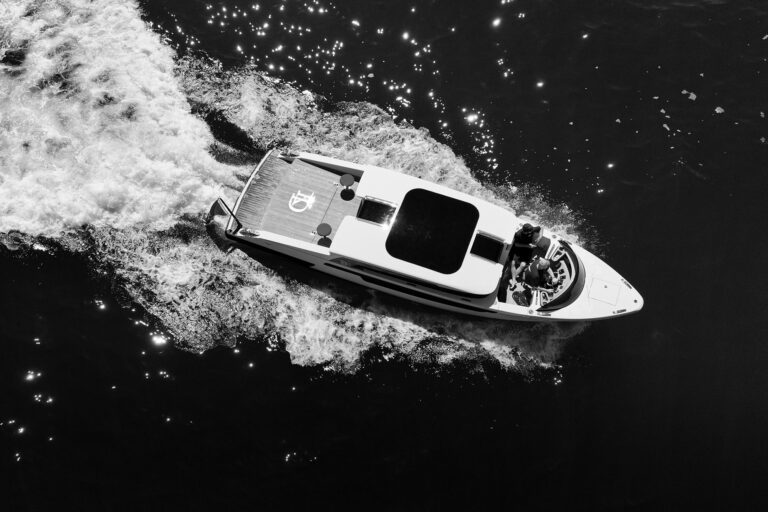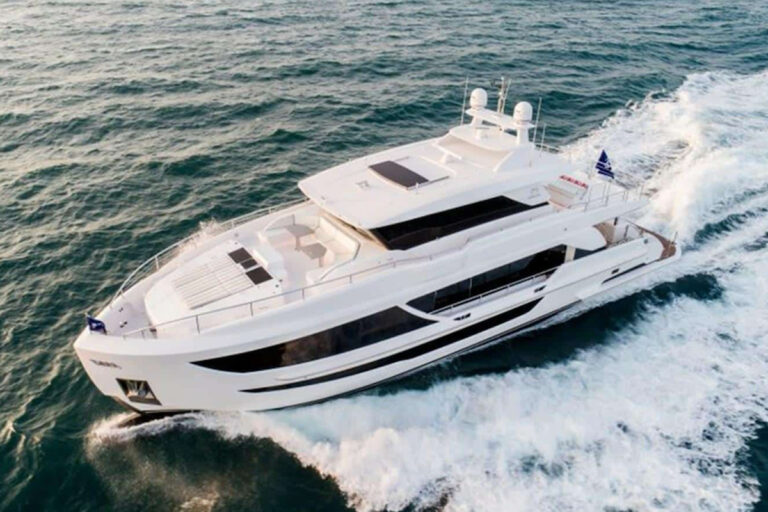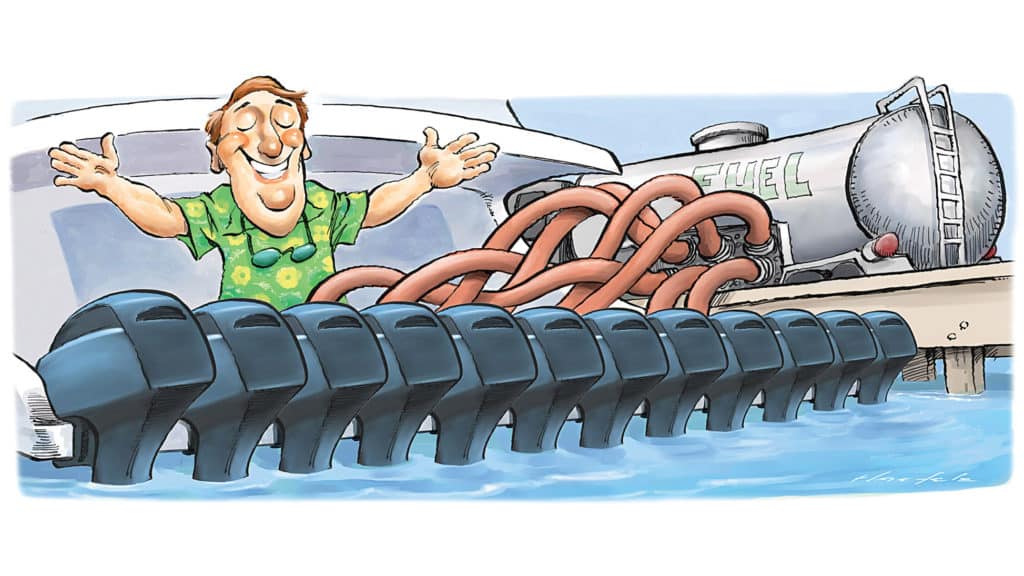
“Coyle, if I were smart, I’d be screwing a dozen outboards to the transom of one of my boats,” groused a pal of mine who designs and builds 80- to 150-foot motoryachts. For the past five years, he’s witnessed a steady migration of yachtsmen to boats that many had once considered tenders.
I understood his grousing but hoped he was kidding.
South Florida’s waterfront is awash in vessels with big-buck, plug-and-play power. Outboards are appearing in increasing multiples on the transoms of an ever-larger, more-diverse assortment of rides. These engines make sense for wannabe racers, sandbar shuttlers and anglers in a hurry, but are serious cruising yachtsmen crossing over to outboard power too?
Consider my pal Ed. He had already owned a fleet of sailing and fossil-fueled vessels when he commissioned an expedition yacht a few years back. After a shakedown cruise from the West Coast to the East Coast, he hired a captain and crossed the pond, and then he and his family spent a year wandering the Mediterranean before returning to the United States. It was the sort of big adventure that doesn’t usually end up as a footnote to an active bucket list, but Ed had another itch to scratch: cruising Florida.
So, he traded Saint-Tropez for the sandbar. He sold his yacht and bought a 45-knot, outboard-powered center-console with a cuddy cabin. He believes the boat’s 40-foot length overall and triple 350 hp motors are perfect for his cruising needs, and he doesn’t miss managing a floating hotel. He has traded a boatyard for a boat lift—and for a boat doctor that makes house calls.
Instead of sipping diesel fuel at 8 knots, he’s now averaging less than a mile per gallon at 30 to 35 knots. He’s not exactly sure—he no longer stresses over such details. He simply looks the other way at the gas pump. He has a diesel generator, air conditioning, a small galley, a dining area that turns into a kid’s berth, a curtained queen-berth compartment, and an enclosed head with a shower. He sees his ride as a “tiny-house solution” to boating. Ed understands that all boats are compromises, including those fitted with external internal-combustion engines.
Read More from Jay Coyle: Tell Tales
It is the diesel’s flat torque curve and deeper gear reductions that win tractor pulls and turn the bigger props best suited for larger, heavier yachts. With outboard power, when sea conditions demand that you slow and go through seas instead of over them, it doesn’t matter how many outboards are screwed to the transom. Ed says it’s a bit like plowing snow with a Ferrari. But, with speed as an asset, Ed can wait for fair conditions to employ it. He accepts the added appendage drag of a third motor because, given a failure, he can still plane home for sundowners.
My yachtbuilder pal was kidding about screwing a dozen outboards to a transom, of course. He’s a smart guy. Still, I’d bet someone is dreaming up a 100-footer with a baker’s dozen outboard motors. Ed is a smart guy as well, and while he’s crossed over, I suspect he’ll cross back when he noodles a bigger cruiser for a bigger challenge.
Because on the ocean, size matters.

